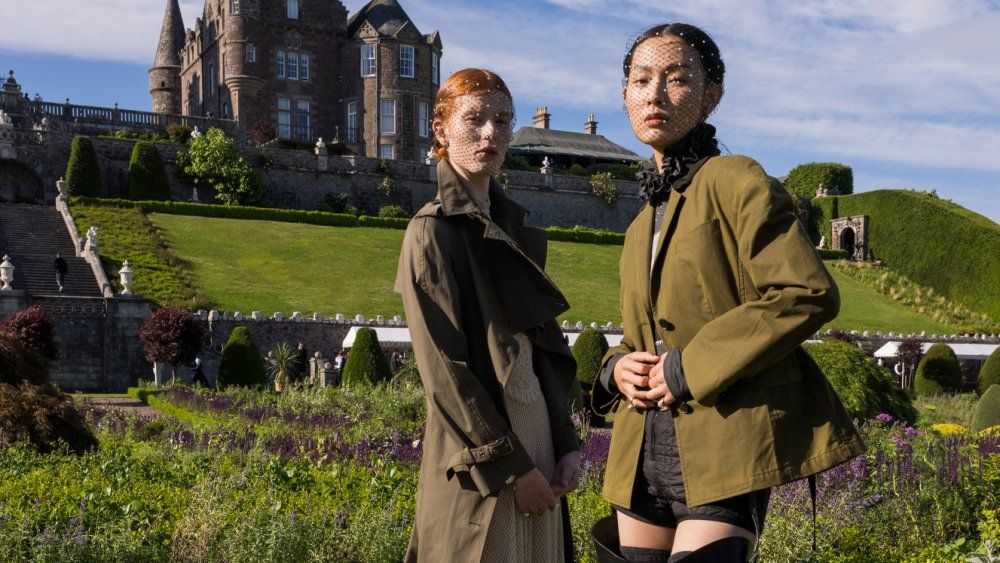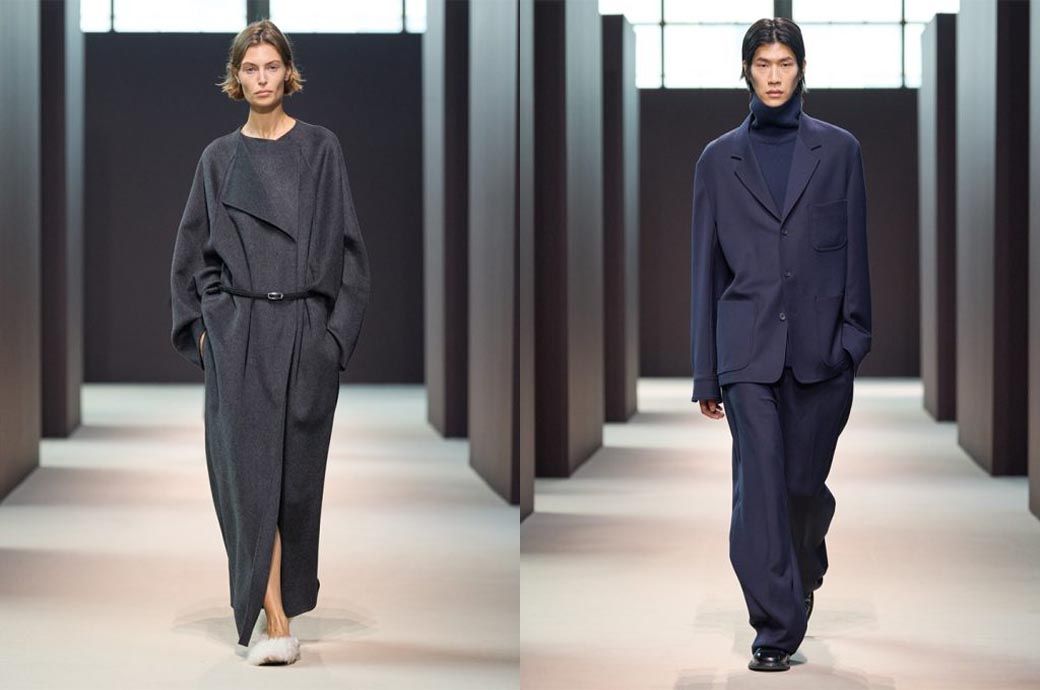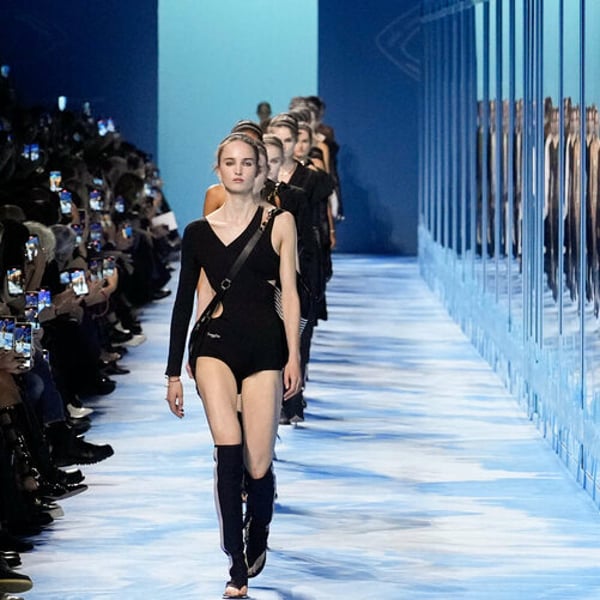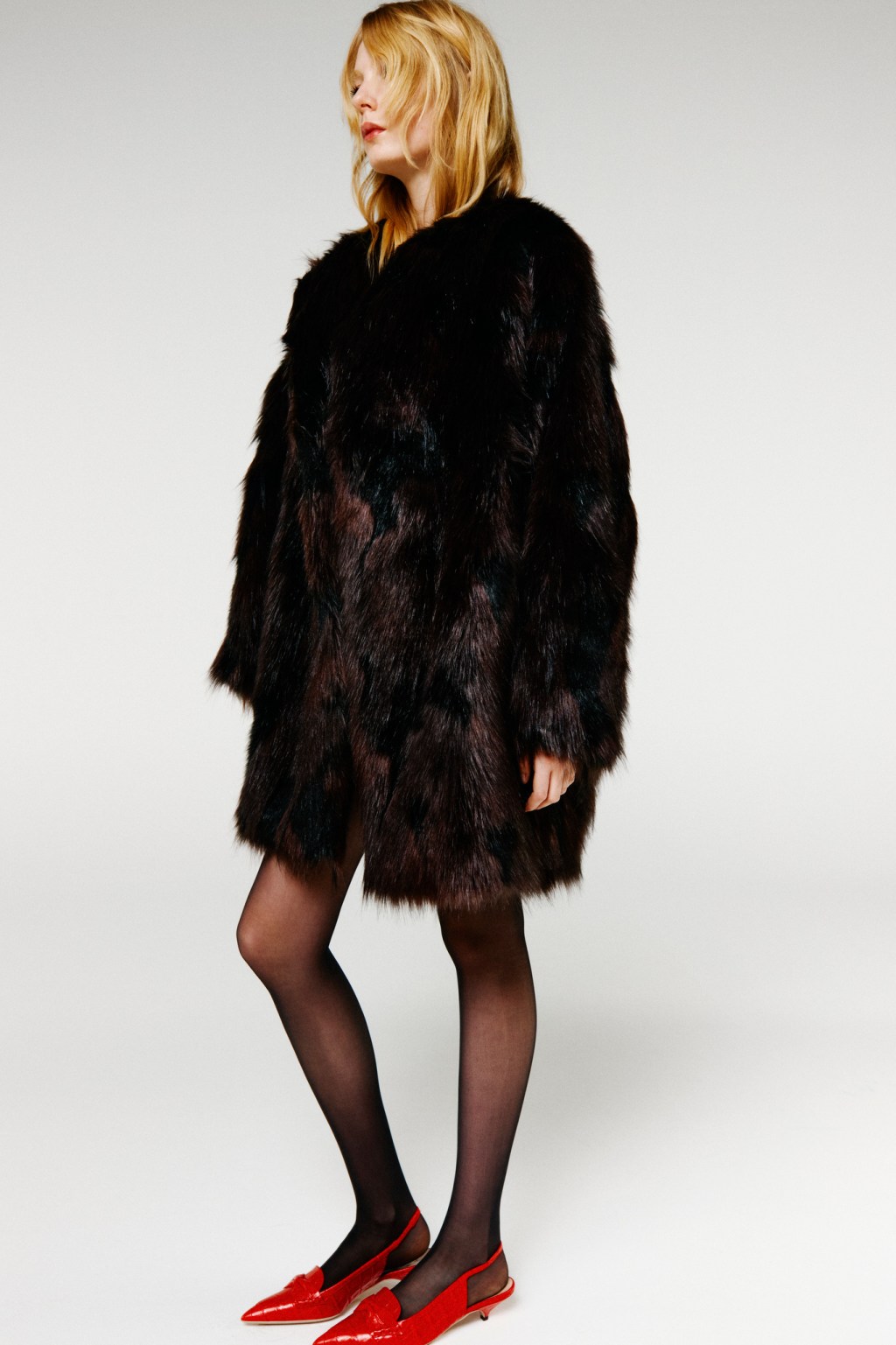Maria Grazia Chiuri became Mary Queen of Scots, for a day, gathering an army of models dressed in lace, black velvet and tartan, and setting them loose in the grand Italianate gardens of 15th-century Drummond Castle in Scotland.
He had fortune on his side. It usually rains during Dior resort shows, no matter where they take place, but Monday's sky was blue and sparkling with sunshine, a small miracle in Scotland, which is even rainier than England. The night was cold, but that's Scotland and there was no room for conformity. Rain is expected to return on Tuesday.
In a nod to all those wet shows, several versions of the Eurythmics' “Here Comes the Rain Again” played as models walked through the gardens' geometric paths and mazes.
Chiuri had been wanting to put on a show in Scotland for years and for countless reasons. She was looking forward to continuing the Dior tradition, learning more about local textiles, and continuing her studies in women's history.
The collection was inspired, in part, by Clare Hunter, textile expert and author of “Embroidering Her Truth: Mary Queen of Scots and the Language of Power.” Chiuri also worked closely with her friend Justine Picardie, who wrote “Miss Dior: A Story of Courage and Haute Couture in a Time of War,” to explore Christian Dior's ties to Scotland.
Dior 2025 Cruise Preview
Yannis Vlamos/World Water Day
He pored over black-and-white behind-the-scenes footage of Dior's spring 1955 show, which took place in the ballroom of the Gleneagles Hotel, and used the images as patches on a cape and T-shirts. and printed bags and blankets that Dior gave to guests at the show.
Chiuri, who had only been to Scotland a few times before starting to work on the collection, was captivated by the romance involved.
“The country is very cinematic and very present in our imagination,” he said during a preview at his temporary studio in Edinburgh, an hour's drive from Drummond Castle.
“It's poetic, romantic and like a fairy tale place with all the castles. Think about how the country's outdoor culture has influenced designers like Vivienne Westwood and Alexander McQueen, to name a few. “I was not surprised that Mr. Dior was fascinated by this country and its textiles,” he added.
Chiuri channeled her own fascination into a beautiful, wearable collection made of hard and soft elements, fit for warriors and royal ladies alike. Minidresses had stiff, sculptural skirts reminiscent of armor, while shiny fabrics dotted with sparkles resembled chain mail. Elizabethan puffed sleeves on sheer blouses were the ultimate in powerful shoulders.
The footwear was fierce, suitable for battle or fly fishing. Models in the most delicate cream lace dresses walked in black boots, some with lots of hardware, zip-up wellies or thigh-high boots with bold garter strap details. Flat sandals and socks gave some of the long, romantic dresses a monastic touch.
“Mary Stuart's costumes mixed very fragile lace with velvet, and there was a dialogue between very different materials,” Chiuri said, referring to Mary Queen of Scots. “For this reason, in the show we mix sportswear with fragile materials. Corsets act as accessories, while cotton and wool fabrics come with embroidery.”
There were contrasts from top to bottom. Some models' braided hair was adorned with gold studs, while others wore delicate veils dotted with tear-like sparkles, courtesy of Stephen Jones.
Chiuri visited Scotland several times over the past few months, making trips to the Johnstons of Elgin weaving mill; examining Esk Cashmere's Fair Isle and other traditional knitwear designs; and delve into the archives of Robert Mackie, who makes ceremonial hats worn by Scottish military regiments.
He flew to the Outer Hebrides to see how Harris tweed wool garments are made (by artisans, often farmers, who weave in their homes on treadle looms) and worked with the collective on a special tartan for the collection, using the colors of the Scottish countryside. like green, yellow and violet.

Dior 2025 Cruise Preview
Yannis Vlamos/World Water Day
Those tartans opened the show: some looked like blankets wrapped around the body and secured with belts and harnesses, while others appeared as draped skirt suits with fringed edges. They had a wild feel, while other long tartan skirts had parachute and toggle details and a touch of punk.
Chiuri loves the idea of a kilt as an original multi-purpose garment. “It's like the sari or the toga. It is in one piece, like a blanket held with a belt. It was the first way different cultures dressed: in a single fabric,” she said.
Chiuri turned to local designer Samantha McCoach of the brand Le Kilt to create an exclusive design for the show, inspired by the moss and various green shoots of the Scottish countryside. She also put her own spin on the classic form, creating dark cotton “working” kilts, long or short, with pockets and contrast stitching.
He even prepared some for the men on his team. “There is a very famous song in Italy about women who want to see men in skirts,” Chiuri said with a big laugh.
His men, he said, “are working behind the scenes and it's a good solution, right? It's better than carrying a bag! “I even made myself a kilt – it means your hands are free and you can run.” Dior men (including Jones) embraced the look, pairing their kilts with argyle socks and black loafers, or with Converse high-top sneakers. Nobody seemed to complain.
“Next, I want to make a calendar in which all my men wear their kilts,” said Chiuri, the queen who has full command of her army.












